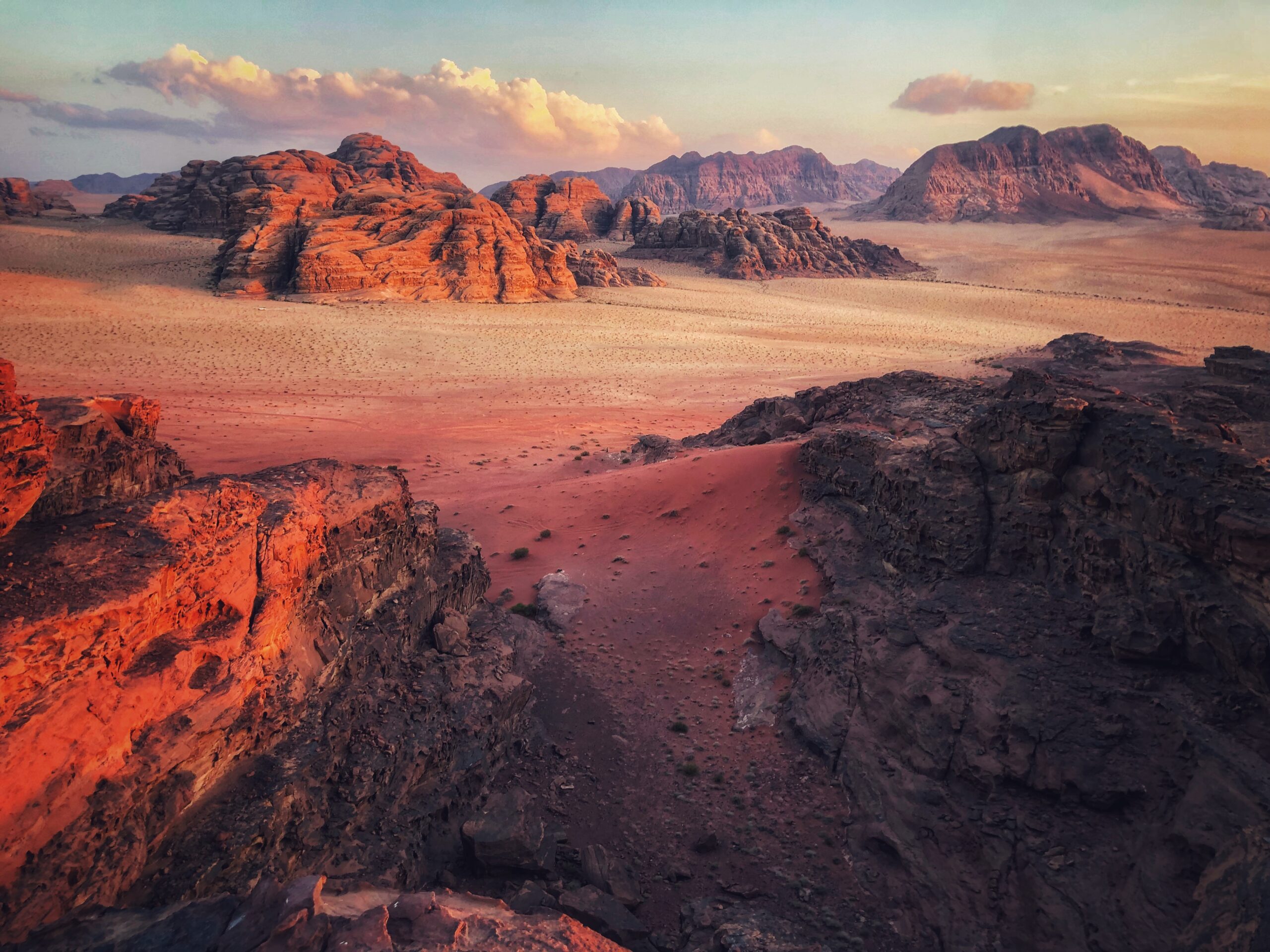There is something about the desert that has always held a special place in my heart. The elemental nature of existing in such a primordial environment, seemingly frozen in time yet always changing on a geological timescale, has always fascinated me. I’ve spent a significant portion of my life exploring deserts, uncovering the hidden remnants of landscapes long forgotten. However, I must say, the most epic of these deserts has to be Wadi Rum, also known as the Valley of the Moon, located in the heart of Jordan.
Wadi Rum is undeniably one of the most beautiful places I’ve ever had the privilege to see. You might not even realize it, but you’ve probably seen this desert before. It has served as the backdrop for so many of the futuristic sci-fi film set in space: “The Martian,” “Star Wars,” “Dune,” and many more. It’s also the landscape that was once home to the ancient Nabateans who built Petra (remember Indiana Jones?). That’s what initially brought me here many years ago—to learn more about the people who created that iconic city carved into the sands.
During my time in Wadi Rum, I had the incredible opportunity to meet a local Bedouin researcher who had devised a crowdsourcing approach to encourage other local Bedouins to photograph, geotag, and catalog all the rock art, some of which dates back up to 5000 years. Among these ancient drawings, you can find depictions of camel caravans, hunting expeditions, and enigmatic glyphs. Rock art has always deeply fascinated me as it serves as a window into a single person’s mind across the ages. Standing right where it was etched, I often feel as if I’m in the presence of the individual who created it.
I asked my Bedouin friend Mohammed about his favorite piece of rock art in the desert, and he showed me some inscriptions that he had translated into a message of despair—a heartbroken lover describing the feeling of loneliness under the endless stars. When he shared this with me, he smiled and exclaimed, “Nothing has changed; we all experience the agony of love, even if separated by 5000 years of time.”



















